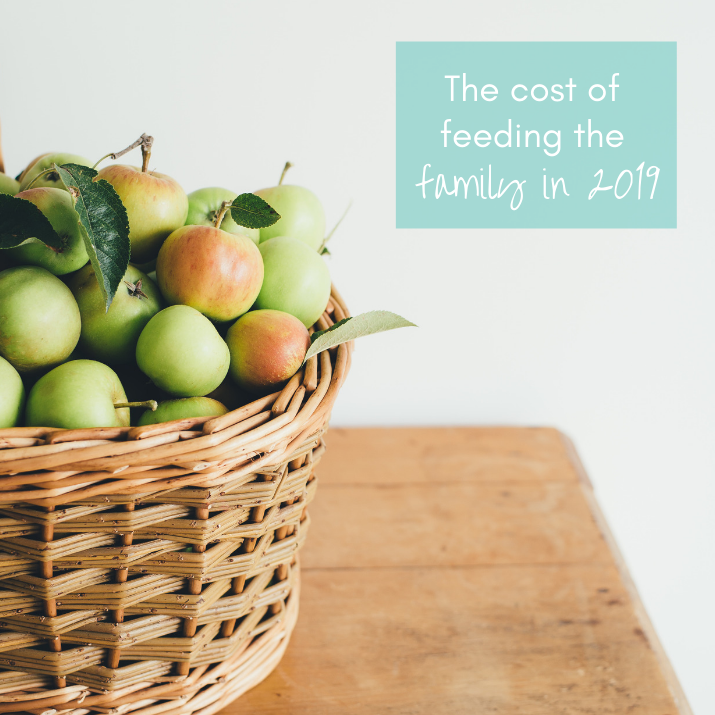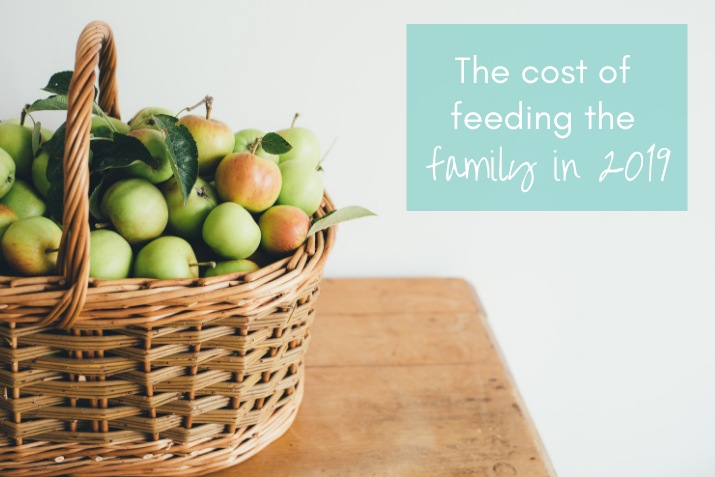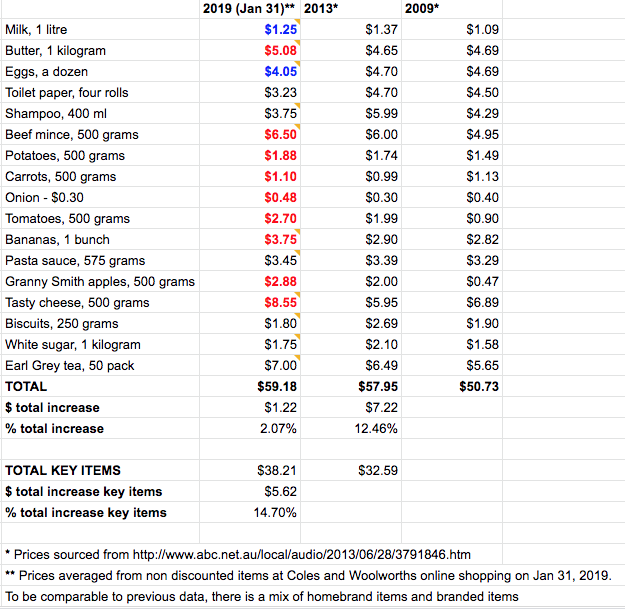Before I start to discuss how much as it costs to provide and care for a family with five kids, I feel it important to note that I am eternally grateful for the family I have. Recent events quite close to me, have once again reminded me of how precious life is and what a gift I have received with my family.
When people hear we have five kids, four of which are boys and three of which are teenagers, often one of their first remarks will be “it must cost you a fortune to feed them”. Our food costs have certainly risen over the last few years as the boys have grown and eat so much more food.
In 2013 I wrote a series of posts about the costs of feeding the family (you can read them here if you are interested). At that time I estimated we were spending approximately $375 on groceries a week. This was an all encompassing total as it included:
- groceries
- fruit and veg
- butchers
- toiletries
- cleaning products
In 2019 we are now spending an average of $501 a week on groceries. One of the great things about tracking your daily expenditure is you can go back and see how much you are spending on what!
So in five years we have seen an increase in our grocery spend by 33%. While this does sound incredibly high, as a family I think we have done pretty well considering the following:
- Teenagers, in particularly active boys eat a lot more food than younger children.
- Teenagers use a lot more personal toiletries than younger children.
- We are eating a more whole food diet (less processed foods) than we did five years ago.
- Cost of food in Australia has increased.
I undertook some research and analysis to see the impact of food price rises over the last five years, the results of which can be seen in the table below.
To source the prices from 2013 I found an ABC article online which tabled the food items by price for the years 2013 and 2009. To obtain prices for 2019, I used Coles and Woolworths online shopping sites and averaged their prices. As with the ABC prices I used a mix of branded and home brand items.
Overall the price rise from 2013 to 2019 was 2%, but when I looked at the items that our family buys most of and in the largest quantities now in 2019 (items with prices highlighted in red and blue in the table) the price increase was 14%.
In terms of a weekly shop for us as a family, this has a huge impact on how much we spend. For example based on these prices in 2013 we would have spent the following in a week:
Beef mince, 500gms x 2 @ $6.00 = $12.00
Potatoes, 500 grams x 2 @ $1.74 = $3.48
Eggs, a dozen x 1 @ $4.70 = $4.70
Milk, 1 litre x 7 @ $1.37 = $9.49
Total = $29.67
In 2019 based on these increased prices and the increased quantities the kids eat now, we would spend the following in a week:
Beef mince, 500gms x 4 @ $6.50 = $26.00
Potatoes, 500 grams x 4 @ $1.88 = $7.50
Eggs, a dozen x 3 @ $4.05 = $12.15
Milk, 1 litre x 14 @ $1.25 = $17.50
Total = $63.15
That is an increase of 53%! So with keeping our increase in grocery spend over five years to only 33% in total, you can now see why I think we have done pretty well.
With the exception of milk and eggs, prices on this list for whole foods have all increased significantly. There is of course the issue of Australian farmers not being paid appropriately for the listed price of milk due to pressures from supermarkets and the eggs prices are caged eggs, not free range eggs. If you were to factor in cruelty free and fair trade prices, the increases in these whole foods would be even higher. I have used these prices only, so I can compare them with the totals in 2013 and 2009.
Food prices expected to rise further in 2019
The outlook for food prices in 2019 is predicted to see the upward trend to continue, due to production cost increases from drought-driven crop shortages, rising fuel prices and the weaker dollar all of which flow through into higher prices to the goods we buy to feed the family.
Here are a few predictions from leaders in the food industry:
Inghams acting chief executive Quinton Hildebrand told shareholders at the annual meeting on Thursday further chicken price increases were likely [in 2019], reflecting higher feed, energy and fuel costs. – Source
Nationally, the fall in winter [wheat] crop production was 23 per cent to 29.3 million tonnes, with Western Australia propping up the drought-ravaged eastern states….Retail analyst Brian Walker said he had no doubt the effects of the drought would eventually drive up prices in “food and fashion” as cotton growers also took a hammering. – Source
Australian Food & Grocery Council chief executive Tanya Barden said suppliers had been cutting operating costs to offset rising energy, labour and transport costs but could no longer afford to absorb the latest pressures. – Source
Tips for keeping the grocery budget lower
To minimise the increase in costs of groceries over the last five years we have done the following:
- Menu planning – I have always menu planned, but it is one of the easiest ways to keep grocery costs down. It does so as you end up cooking more at home, you reduce food waste, you can plan your meals to take advantage of seasonal foods/specials and you can plan to use cheaper cuts of meat in the slow cooker etc, as opposed to having to buy more expensive cuts when you are going to cook them straight away.
- Weekly food prep – As you would be aware I do weekly meal prep most weekends. This means that I make food in advance for evening meals, for school lunches, for my and my husband’s lunches. This reduces the food bill as we buy far less processed lunch and snack foods.
- Waste free lunch boxes – most of the kids have waste free lunch boxes. This means I buy things like crackers etc in bulk and the kids take them in containers. This cuts down costs in two ways – it is cheaper to buy bulk and it cuts down on the expense of buying plastic wrap and zip lock bags.
- Buying in bulk – we buy things like toilet paper, meat and some pantry items in bulk to be able to advantage of cheaper per kg dollar costs.
Shopping at multiple places – with food shopping easier to do on my own, I can take the time to go to various shops to make sure I am getting the best prices on key items we buy.
It is definitely possible to feed a family a more whole foods based diet within a budget, but it does require planning and preparation.
I would love to hear about your situation. Has your grocery bill increased significantly over the last five years and if so, what steps have you taken to keep the increases to a minimum?

Planned + Present will be open for registration again on Monday 11th February and I would love to join in on round 8 of my online course. P+P has been running for over two years now and has helped 100s of mothers to streamline the known repetitive tasks of family life, so they can then better manage and enjoy family life more.
It also shares a super simple and easy to implement strategy for menu planning and undertaking weekly meal prep sessions. If you would like to here how P+P has helped other mothers you can read about their experiences with the course here.



